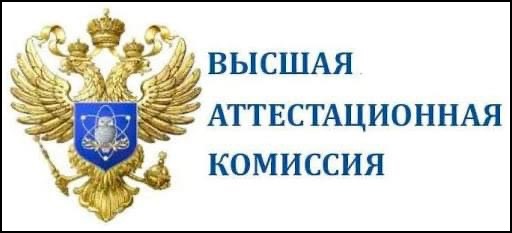РЕЗУЛЬТАТЫ ИНЖЕНЕРНО-ГЕОФИЗИЧЕСКИХ ИССЛЕДОВАНИЙ УЧАСТКА ЛЕДОВОГО ГАЗОКОНДЕНСАТНОГО МЕСТОРОЖДЕНИЯ БАРЕНЦЕВА МОРЯ
Аннотация
В работе представлен анализ рельефа дна Ледового месторождения Баренцева моря на основе результатов инженерных изысканий. Одними из основных методов изысканий для получения сведений о рельефе дна являлись многолучевое эхолотирование и гидролокация бокового обзора. Описана методика получения и обработки данных, а также представлен сравнительный анализ батиметрии и модели гидролокации бокового обзора. В результате анализа была описана морфология дна, а также выделены основные формы рельефа: борозды ледового выпахивания U-образного и V-образного типов, изометричные углубления на дне, палеодолина. Выявлено, что борозды выпахивания имеют преимущественно северо-западную ориентацию, глубина их залегания и морфология могут указывать на «палеогеографическое» происхождение. Общая модель гидролокации дна позволила выделить как локальные, преимущественно техногенные, объекты на дне (траловые борозды), так и объекты естественного происхождения (скопления валунов). Полученные данные являются важнейшей информацией при проектировании инженернотехнических сооружений на месторождениях.
Литература
- Геоморфологический словарь-справочник / Сост. Л. М. Ахромеев; Под ред. П. Г. Шевченкова. Брянск: Издательство Брянского государственного университета, 2002.
- Зайончек А. В., Брекке X., Соколов С. Ю. и др. Строение зоны перехода «континент–океан» северо-западного обрамления Баренцева моря (по данным 24–26-го рейсов НИС «Академик Николай Страхов», 2006–2009 гг.) // Строение и история развития литосферы / Под ред. Ю. Г. Леонова. М.: Paulsen, 2010. С. 111–157.
- Замотина З. С., Старовойтов А. В., Токарев М. Ю., Терехина Я. Е., Колюбакин А. А., Гончарова А. М. Палеодолины и палеодепрессии Восточно-Приновоземельского района Карского моря // Вестник Московского университета. Сер. 4. Геология. 2023. № 2. С. 117–127.
- Левченко О. В., Либина Н. В. Формирование рельефа дна Белого моря в позднечетвертичное время // Океанологические исследования. 2018. № 3 (46). С. 183–192.
- Мазнев С. В., Кокин О. В., Архипов В. В., Баранская А. В. Современные и реликтовые следы айсберговой экзарации дна Баренцева и Карского морей // Океанология. 2023. № 1 (63). С. 95–107.
- Миронюк С. Г., Иванова А. А., Колюбакин А. А. Экстремальные глубины современного ледового выпахивания на шельфе северо-восточной части Баренцева моря // Российские полярные исследования. 2018. № 1 (31). С. 12–14.
- Никифоров С. Л., Ананьев Р. А., Либина Н. В. и др. Ледовая экзарация на Арктическом шельфе России // Океанология. 2019. № 3 (59). С. 466–468
- Рыбалко А. Е., Миронюк С. Г., Росляков А. Г. и др. Новые признаки покровного оледенения в Карском море: мегамасштабная ледниковая линейность в Восточно-Новоземельском желобе // Рельеф и четвертичные образования Арктики, Субарктики и Северо-Запада России. 2020. Вып. 7. С. 175–181.
- Система Баренцева моря / Ред.: Лисицын А. П., Агатова А. И., Агафонова Е. А., Шипилов Э. В., Шкарубо С. И. и др. М.: Издательство Института океанологии им. П. П. Ширшова РАН, 2021.
- Строительство разведочной скважины № 3 Ледового месторождения. «План предупреждения и ликвидации разливов нефти и нефтепродуктов. Оценка воздействия на окружающую среду». 2021. [Электронный ресурс]. https://seaprojects.gazprom.ru/d/textpage/9b/155/ovos-na-plrn-led-3.pdf.– свободный. Загл. с экрана. Яз. рус. (дата обращения: 10.07.2024).
- Строительство разведочной скважины № 4 Ледового месторождения. «Оценка воздействия на окружающую среду» 2021. [Электронный ресурс]. https://krasnoyarskgazprom-ngp.gazprom.ru/d/textpage/9b/155/ovos_pd_ledovaya-4.pdf.– свободный. Загл. с экрана. Яз. рус. (дата обращения: 10.07.2024).
- Bell T., Cooper A. K., Solheim A. et al. Glossary of glaciated continental margins and related geoscience methods. Atlas of Submarine Glacial Landforms: Modern, Quaternary and Ancient // Geol. Soc. Mem. Lond. 2016. P. 555–574.
- Lambeck K., Yokoyama Y., Johnston P., Purcel A. Global ice volumes at the last Glacial Maximum // Earth and Planetary Science Letters. 2000. Vol. 181. P. 513– 527.
- Nikiforov S. Morphogenetic classification of seabed // Seabed morphology of Russian arctic shelf. N.Y.: Nova Publisher, 2010. P. 175–188.
- Solheim A. Depth-Dependent Iceberg Plough Marks in the Barents Sea // Glaciated Continental Margins / Davies T. A. et al. (Eds.). Dordrecht: Springer, 1997. P. 138–139.
Передача авторских прав происходит на основании лицензионного договора между Автором и Федеральным государственным бюджетным учреждением науки Институт океанологии им. П.П. Ширшова Российской академии наук (ИО РАН)













